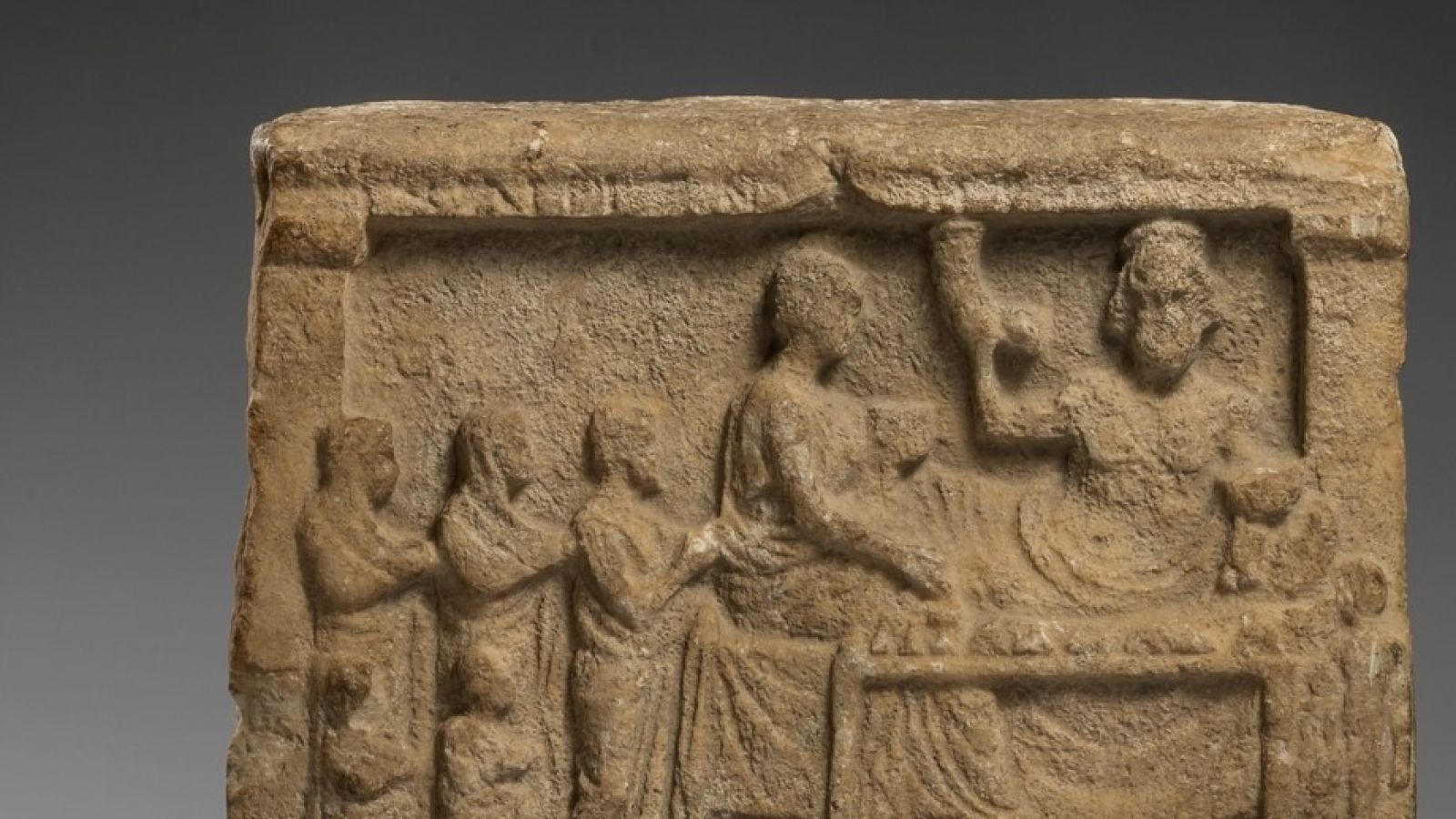ANU Classics Museum goes digital

Greek Marble Stele of the Type Known as a Hero Relief. Image: Dr Bob Miller.
By Evana Ho
The ANU Classics Museum, established in 1962, has long been a treasured part of the University. For months when the Coronavirus crisis caused the campus to close, its esteemed collection sat unvisited and unseen behind glass. Now, all the items have been made available online for not only Canberra residents to enjoy, but anyone from around the world.
Emeritus Professor Elizabeth Minchin, who has been the curator of the museum for over 20 years, is excited and relieved by the development.
“This is something that has been on my to-do list for some years,” Professor Minchin says.
“In today's COVID-19 world we appreciate more than ever how important it is to make collections of all kinds available to the wider world. Thanks to some funding from the DVC and ANU School of Literature, Languages and Linguistics, we were able to employ a research assistant to upload the material that has been prepared over several years by a number of scholars (Professor J.R. Green of Sydney University, the late Professor Beryl Rawson, the late Dr Douglas Kelly, and others).”
The catalogue photography was the “excellent” work of Dr Bob Miller, a specialist archaeological photographer. The research assistant Professor Minchin mentions is Glen Goodwin. Glen undertook his undergraduate studies at the ANU in Classics, and he has remained here to complete a Master of Museum and Heritage Studies. He says that he has enjoyed being able to combine both fields in his role, creating the online catalogue.
“During my Masters I’ve become increasingly interested and involved in Digital Humanities projects, and how they can make Classics more accessible, as well as providing unique interpretive digital tools,” Glen says.
“After I finish my studies I would like to continue to be involved in Digital Humanities projects, as I believe the current state of the world has shown how important digital methods of learning are. The ability to take a collection beyond the museum is of particular interest to me.”
In addition to uploading text and images to the catalogue, Glen wrote some of the catalogue entries for new acquisitions. “I have also been creating metadata such as tags and keywords to make the collection more useful and searchable as an online resource,” he adds.
This project has been no small feat, given the ANU Classics Museum houses around 600 objects including ceramics, metalwork, glassware, and sculpture from Cyprus, Asia Minor, Greece, and the Roman world. 190 of the items are on loan, from the National Gallery of Australia, the Parliament House Collection, and from private collectors – including former ANU students. All of the items are representative of everyday life in the ancient Mediterranean world.
In explaining why the museum is so significant, Professor Minchin says that the care that has gone into assembling this coherent collection of everyday artefacts makes it distinctive amongst other collections in Australia and New Zealand. A collection of this kind has historical significance, as well as significance for art history and studies in ancient technology. It is also a resource for research, as recent exciting work on the collection’s fragment of cameo glass has shown.
The museum is an invaluable teaching resource – which was its intention from its inception. Thousands of ANU students studying Classics, Ancient History, Art History, and Archaeology have used the collection in the course of their studies; indeed, most of those regularly walked through the museum in the AD Hope building on their way to class.
This has definitely been true for Glen: “The ANU Classics Museum is special to me because, having had classes in and around the museum for so long, [it has] started to feel like home,” he says.
“I also like the variety of objects used by ancient people, ranging from high status objects like jewellery and sculpture down to everyday items such as a roughly sculpted terracotta pig that may have been a child’s rattle.”
His favourite object from the museum though, is a cylinder seal made of lapis lazuli (1975.16, 1400-1200 BC) from a Bronze Age temple excavated in modern Jordan.
“The seal would have been rolled in clay, leaving an imprint of the image that had been carved into the lapis,” Glen says. “Just as we use a signature in today's world, these impressions were guarantees of identity.”
The seal, he explains, presents as a small blue cylindrical bead and is less than 2cm long. So small, that it could go unnoticed inside a showcase.
“On the new website, however, visitors can view high resolution images of the Cylinder Seal, presented alongside an illustration of the seal imprint, which really showcases the object and its uses in a new context,” he says.
Understandably for Professor Minchin, identifying a single favourite object from the collection is a difficult decision. So she mentions two.
“I veer between a piece that pleases me immensely because of its form and a piece that delights me because it tells us something about domestic life in a world remote from ours,” Professor Minchin says.
“So my first favourite is the small bronze figurine of a curvaceous and happily unabashed Aphrodite, who, having emerged from the waves, is wringing out her hair (see 2005.02 in our collection). My second favourite is a small spouted cup from Sicily, used as a baby's feeding cup (1966.02 in our collection).
“When you see this small cup, or indeed when you hold it, you can readily transport yourself back to a 4th century BC household and into the life of a family.”
View the entire collection of the ANU Classics Museum for yourself online here.